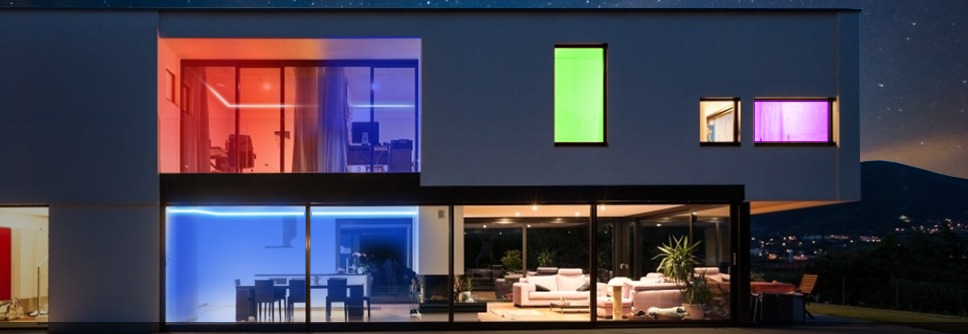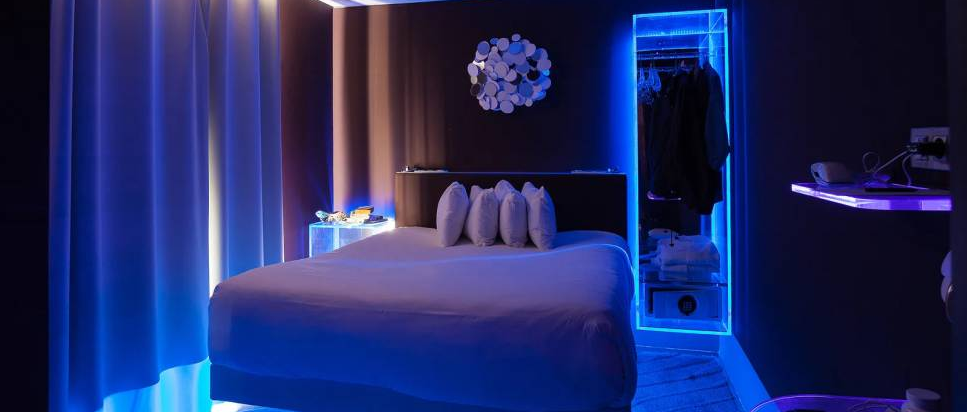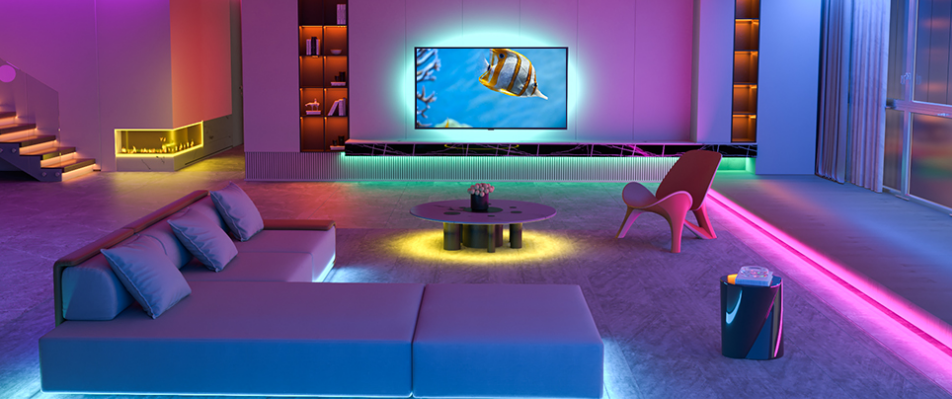If you’re looking for a new way to add some much needed ambiance to your home without breaking the bank, you should definitely consider jumping on the ever-trending LED light strip train. The reason why LED light strips have gained so much popularity in the last few years is that they are a flexible, multi-functional, stylish, and cost-effective light source that improves the look, feel, and functionality of the home. They are being used for kitchen improvements, staircase features, office fit outs, ceiling features, and more.
Curious but not sure how to start taking advantage of these trendy yet practical and affordable lights? Read on to get the scoop on LED light strips and how to use them.
LED light strips are long, thin, and flexible circuit board strips populated with numerous light emitting diodes. The underside of the strip often has an adhesive for sticking the light strip onto surfaces. They are incredibly flexible and multi-functional as they do not require a light fixture in order to work; they can simply be adhered to or mounted onto a surface and plugged into a power source. They usually have highly adjustable dimming, color, and strobe settings, all controlled with a switch, remote control, or even an app for some products. Some of the most common LED light strips uses include accent lighting, mood lighting, decorative lighting, and task lighting.
LED light strips lifespan is exceptionally long as light emitting diodes use the process of electron excitation as opposed to conduction in order to function - it’s technically impossible for LEDs to burn out, but over a period of about 50,000-100,000 hours they will dim to a brightness of only 70% which is when manufacturers advise changing them.
Electron excitation is the process of stimulating a condensed group of electrons with a small amount of electricity to the point where they move rapidly, which consequently creates light. This process greatly improves the lifespan of a light source because it doesn’t rely on any finite light emitting materials. On the other hand, conduction and convection, the processes used by halogen and incandescent light bulbs, rely on heat to illuminate filaments that are inoculated with compounds that will be used up and burnt out over a much shorter period of time.
Compared with other kinds of light sources, LED light strips and LEDs in general don’t use a lot of electricity, only around 7-35 watts per hour, depending on the particular product. To put this into perspective, a MacBook uses about 96 watts per hour when charging.
The reason for this low energy consumption goes back to the process of electron excitation. Simply put, it’s an extremely energy efficient method to create light as it doesn’t involve the generation of heat.
LED light strips are very safe, especially compared with other types of light sources. As previously mentioned, they do not require much electricity to function and don’t generate heat, which are two of the biggest fire hazards related to lighting. Furthermore, there are plenty of waterproof options for LED light strips available now, so if you’re worried about a leak or spilled water on the lights causing any short circuiting, you could always go with a waterproof product.
If anything, LED light strips can actually improve your overall home safety, as they make for great and cost-effective outdoor security lighting which is more likely to deter thieves. There are also motion-sensing LED light strips available - here’s an idea: set up some motion sensing RGB LED light strips on or around the doors or windows and set them to flash red and blue – like police sirens - when activated. Ideally, that will help discourage any wrongdoers.

The most common design differences are in how individual LEDs are controlled, specifically differences in color and whether or not each individual diode is addressable.
LED light strips have a wide variety of uses and applications, but they typically provide a cost-efficient and stylish source of backlighting, accent lighting, or decorative lighting. Let’s go over some of the different ways you can complement the rooms in your home with LED light strips as well as some unique LED light strips tips and tricks.



Those were some of the popular uses for LED lighting strips that can provide your home with some added depth, character, and functionality. Now let’s look at a few unique LED light strip tips and tricks.
Illuminate the staircase – You don’t necessarily need to drop a fortune on expensive decorations and art to give your home an air of elegance. A more subtle and unique idea to smarten up your place is to apply LED light strips just under the lip of your stairs. This will provide a sophisticated look to your staircase as well as a useful and inconspicuous source of light for climbing the steps at night.
Up your photography – Lighting is one of – if not the most - important aspects of photography. Given how easy it is to manipulate LED strip lights, your photography can reach a whole new potential by taking advantage of the ambiance and customizability that comes with making use of LED light strips.
Glorified Camping – Having a reliable light source is essential for camping. We often rely on headlamps or flashlights; however, we will sometimes misplace these in the dark. With the use of a few LED light strips, you can conveniently create a lighting setup that would admittedly mark you as a “glamper”, but give a really cool and aesthetic campground with the added touch of convenience.
Showroom style garage lighting – One of the most tried and tested LED light strips hacks: spruce up your dusty and dank garage by cleverly mounting some LED light strips in the dark corners and recesses. If you also use your garage for a work or hang out space you can strategically set up light strips under your workbench, storage space, or in your hang out space. Regardless of what you use your garage for, you can make it look sleek and impressive with a whole other level of functionality simply by using a few LED light strips.
Design a funky Halloween or party costume – We saved the most ostentatious use for last. You can be the highlight of the Halloween party, music festival, or other themed party and use RGB LED strip lights on clothing to create your own costumes reminiscent of Daft Punk, Tron, or Cyberpunk 2077.
And there’s our breakdown of LED light strips uses. Hopefully, this guide gave you the gist of how these discreet yet highly effective lights work as well as some inspiration for your home improvements. One of the best ways to get into using LED light strips is by using them for TV backlighting, as we mentioned earlier. Have a look at our LED strip lights that are specifically designed for this purpose to get started with using these super useful and stylish lights.

You must be logged in to post a comment.
How do I reset the under cabinet lights to motion sensor?
Hello there,
The under cabinet lights don't have a reset feature. You can simply long press the "123" button to switch between the "Always On" and "Sensing" modes. When "Sensing" mode is on, the cabinet lights will turn on automatically when there is not enough light in the room or cabinet.
We hope this helps, please let us know if you have any further questions.
Best regards,
Team Tasmor